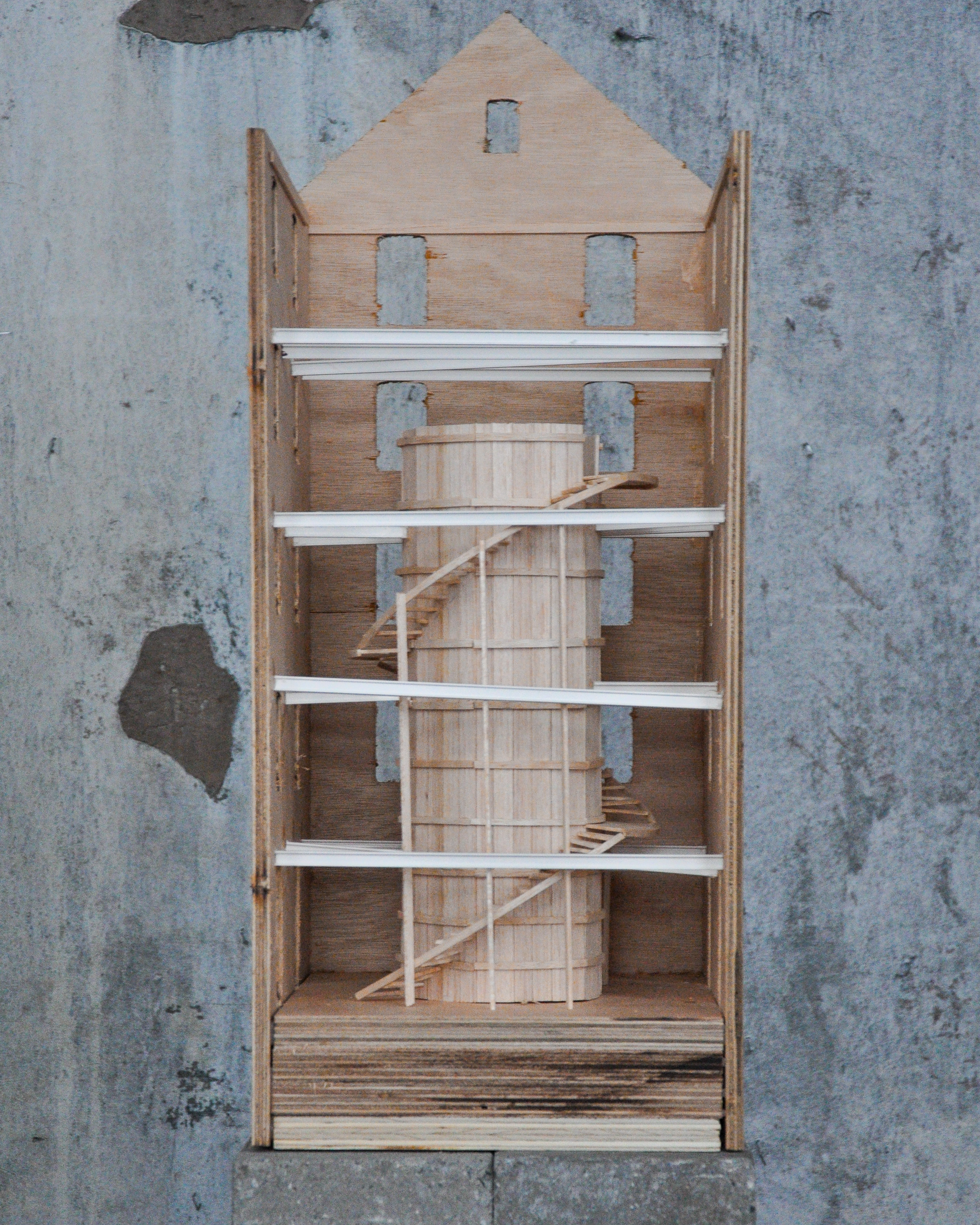Masterstudio: The Architect changemaker Semester 1
Hugo Tamellini



Le Foulon
Located in the Walloon region, Viroinval is a scenic area surrounded by nature and known for its distinctive atmosphere. I have sought to capture the essence of this enchanting setting in the design of my pavilion within the tannery.
In line with the Urban Mining group's ethos, which is dedicated to exploring the reusability of materials from the old Viroinval tannery, the ambition is to breathe new life into them. The objective is to recreate the environment's atmosphere inside the building, while blending sustainability and aesthetics.
The building's proximity to the Viroin River inspired the incorporation of water features to provide a wet atmosphere to the space. A water tank was designed in the shape of a traditional 'Foulon', a large drum historically used in tanneries to dye leather.
The centerpiece of the design is the water tank, which has been crafted from reclaimed floorboards and wood joists of the old tannery. 16% of the wood from the site has been used in this project. The placement of the Foulon creates a sense of height that is in continuity with the building.
The inverted roof serves as a rainwater collector, utilizing the existing structure. The old roof tiles were repurposed to cover it, and a central hole directs rainwater into the Foulon, seamlessly integrating nature into the architectural narrative.
The Foulon is intentionally left open at the top, inviting rainwater to cascade into its depths. This design enhances the internal atmosphere and transforms the Foulon into a unique diving pool, providing an opportunity to fully experience this special atmosphere both physically and emotionally.

